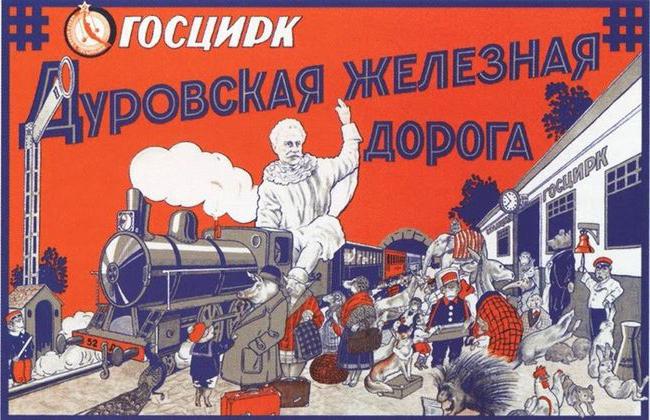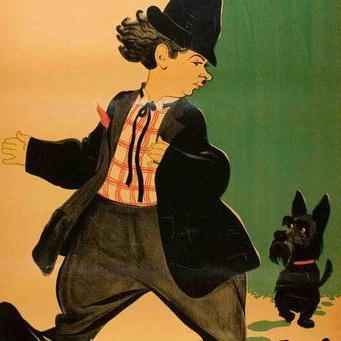Most of those born in the USSR had no doubt that the Soviet circus was the best in the whole world. It is our illusionists who are the most “magical”, the clowns are funny, and the trainers and acrobats are brave and courageous. A trip to the circus was a great celebration for both adults and children.
But Soviet circus art did not arise from scratch. We will talk about how the Soviet circus developed in this article.
History of Russian Circus Art
Back in the days of Kievan Rus, the first "seeds" of circus art were laid in our country, as evidenced by the frescoes in St. Sophia Cathedral in Kiev , dating from 1070-1075. They depict horse competitions and fist fights, equilibrists with poles. In those days, artists such as roaming acrobats and guide bears, buffoons and jugglers performed at city squares, fairs and festivities, surprising and amusing people. The heyday of the case of buffoons in Russia were the XV-XVI centuries.
Thanks to the efforts of Tsar Peter I in the XVIII century, secular life began to take shape in the capital and major cities and touring European circus artists began to appear, which contributed to the rapid development of circus art.
The heyday of the Russian circus is considered the XIX century.
It was at this time that many booth fair performances took place with the participation of strong men and gymnasts, jugglers and acrobats, dancers and magicians, as well as artists of other genres. With a performance in fair booths, the artistic career of the Nikitins and Durov brothers, as well as many others, began. An important milestone in the development of the Russian circus was the opening of the first stone buildings: in St. Petersburg, on the Fontanka embankment, in 1877, in Moscow, on Tsvetnoy Boulevard, in 1880.
The emergence of the Soviet circus
After the events of October 1917, significant changes took place in the fate and history of Russian circus art. The Bolsheviks, conducting a cultural revolution, provided the state support to the circus and made it a powerful ideological tool through which the masses were influenced. An important influence on the development of the Soviet circus was made by the decree “On the unification of theatrical affairs”, signed in August 1919 by Ulyanov-Lenin. According to this document, all circus and theatrical property was subject to nationalization. However, things progressed rather slowly, and by 1922 the domestic circus consisted of only two state Moscow circuses.

Then pretty quickly, in just three years, another 15 circuses in various Soviet cities became state ones. The first of them was the Soviet circus tent opened at the Nizhny Novgorod Fair. Then they were nationalized, repaired and began to give circuses in Leningrad, Tver, Rostov-on-Don, Orel, Kiev, Ivanovo-Voznesensk, Kazan, Tula. Most of the presented numbers were foreign, as their own artistic personnel were not enough, and the level of their training left much to be desired. To solve the problem, in 1926 circus art courses were organized, which later became a technical school, where the first artists of the Soviet circus were trained.
Becoming
In the late 1920s and early 1930s, many new acts appeared on the domestic circus arenas, prepared taking into account the changing ideology and worldview of the audience. After the release of a film about spectacular art in 1936, a generation of inspired and hungry young artists came to the Soviet circus. It was at this time that the first peak of the popularity of the great clown Pencil (M.N. Rumyantsev) came, the magnificent numbers of the gymnasts Valentina and Mikhail Volgin, Semyon Basta appeared, and the rope walkers Brothers Svirins and Pavel Tarasov struck with their skill. We can safely say that in the thirties and forties of the XX century, the Soviet circus had already developed its own unique and easily recognizable style.
War and the postwar years
The circus arena educates artists of any genre such qualities as endurance and endurance, courage and perseverance in achieving the goal. All of them appeared in difficult military conditions. It was no coincidence that Marshal Chernyakhovsky described circus performers as people of steel character.

The Soviet circus during the Great Patriotic War suffered great damage. As a result of the bombing, many buildings were destroyed, but even in the most difficult years of the war, the Soviet government took measures to support circus art.
They became pilots, paratroopers, sappers, artillerymen masters of the arena. On the second day of the war, an ensemble of riders, led by M. Tuganov, together with horses joined the cavalry corps of Dovator. The remaining artists continued to perform as part of the artistic brigades, giving concerts on the front lines and in hospital wards, at stations and in military commissariats. Satirical numbers, which were shown by clowns of the Soviet circus Mikhail Nikolaevich Rumyantsev (Pencil), Boris Vyatkin, Konstantin Berman, were very popular among both fighters and workers.
Many of the artists died on the fronts, and those who survived, in the postwar years, together with young cadres began to restore and develop circus art, which was later recognized as the best in the world.